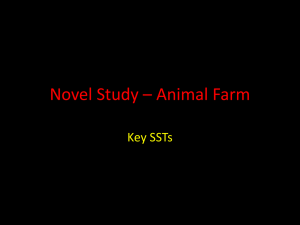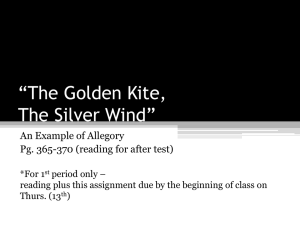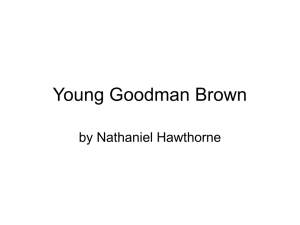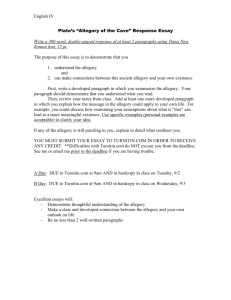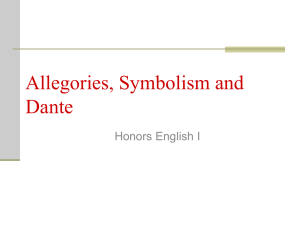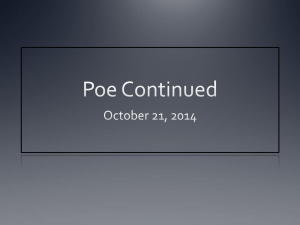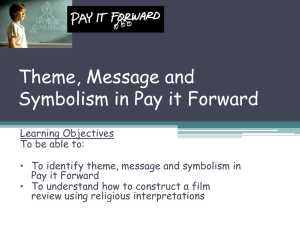Allegory Adaptation Plato Adaptation 2016
advertisement
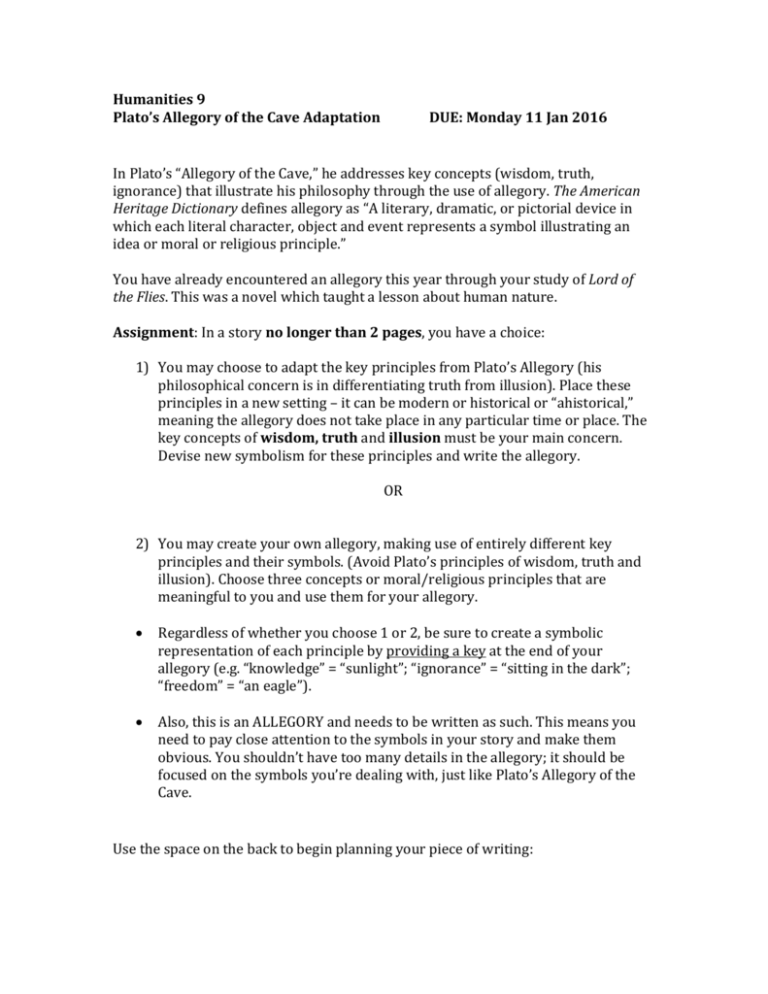
Humanities 9 Plato’s Allegory of the Cave Adaptation DUE: Monday 11 Jan 2016 In Plato’s “Allegory of the Cave,” he addresses key concepts (wisdom, truth, ignorance) that illustrate his philosophy through the use of allegory. The American Heritage Dictionary defines allegory as “A literary, dramatic, or pictorial device in which each literal character, object and event represents a symbol illustrating an idea or moral or religious principle.” You have already encountered an allegory this year through your study of Lord of the Flies. This was a novel which taught a lesson about human nature. Assignment: In a story no longer than 2 pages, you have a choice: 1) You may choose to adapt the key principles from Plato’s Allegory (his philosophical concern is in differentiating truth from illusion). Place these principles in a new setting – it can be modern or historical or “ahistorical,” meaning the allegory does not take place in any particular time or place. The key concepts of wisdom, truth and illusion must be your main concern. Devise new symbolism for these principles and write the allegory. OR 2) You may create your own allegory, making use of entirely different key principles and their symbols. (Avoid Plato’s principles of wisdom, truth and illusion). Choose three concepts or moral/religious principles that are meaningful to you and use them for your allegory. Regardless of whether you choose 1 or 2, be sure to create a symbolic representation of each principle by providing a key at the end of your allegory (e.g. “knowledge” = “sunlight”; “ignorance” = “sitting in the dark”; “freedom” = “an eagle”). Also, this is an ALLEGORY and needs to be written as such. This means you need to pay close attention to the symbols in your story and make them obvious. You shouldn’t have too many details in the allegory; it should be focused on the symbols you’re dealing with, just like Plato’s Allegory of the Cave. Use the space on the back to begin planning your piece of writing:
